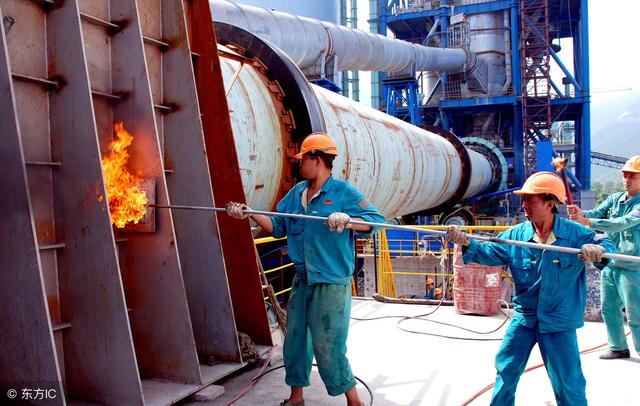Tips: What are the occupational hazard protection products for building materials industry?
I. Occupational hazards and prevention of cement plants There are many kinds of cement, commonly used are ordinary portland cement, slag portland cement, pozzolanic portland cement, etc., in addition there are special-purpose acid-resistant cement, cement for dam construction and so on. With different varieties, raw materials are also different, mainly limestone, clay, volcanic mud, shale, iron powder, coal, slag, gypsum, diatomaceous earth and so on. There are two kinds of wet methods and dry methods. The difference between dry and wet methods is mainly due to the different processing methods of raw materials. After the limestone is crushed, the dry method should be mixed with clay, iron powder, coal, and other raw materials to go into fine grinding after drying and batching. In the wet method, no drying is required. The raw material is ground into slurry, water is pumped into the raw material pool, and then sent to the kiln for firing. The firing equipment includes vertical kiln and rotary kiln. The main occupational hazards in cement plants are as follows: 1) Dust. All equipment and transportation systems such as raw material grinding, fine grinding, firing, finished cement grinding, cement finished product packaging, and transportation, all generate dust, and dust masks should be properly selected. China has included cement dust pneumoconiosis as an occupational disease list. 2) High temperature and radiant heat mainly exist in the firing shop. Noise and vibration exist throughout the entire production process. For the prevention of the above hazards, usually the following aspects: 1) Innovation of production technology, rationalization of production processes, and confined production equipment; 2) Heatstroke cooling. The high-temperature operation of cement plants is mainly in the calcination and drying operations, and measures such as natural ventilation and local ventilation can be adopted according to local conditions. 3) Noise management. Mainly to do a good job of various vibration and noise equipment anti-vibration and sound insulation measures. Such as the basis of the anti-vibration machine, blower anti-vibration and silencer devices. Personal protective equipment recommended: dust masks, ear plugs and so on. Second, the occupational hazards and prevention of refractory materials factory Due to the different types of firebricks, the raw materials used are also different and the production process is generally the same. In the production process of refractory materials, workers have the opportunity to contact with dust, which is a serious hazard to pneumoconiosis, especially when producing silica bricks. China has already had successful experience in dust prevention measures, namely, measures of airtightness, ventilation and dust removal based on the mechanization, sealing, and automation of the production process. In addition, measures to prevent heatstroke and personal protection should also be taken. Personal protective equipment recommended: dust masks, gloves, protective clothing and so on. Third, ceramics factory occupational hazards and prevention Ceramic products can be divided into pottery and porcelain, and can be divided into daily-use ceramics (bowls, dishes, plates, jars, cans, etc.), building ceramics (tiles, mosaic tiles, ceramics, etc.), and electric ceramics (electric porcelain). , electric porcelain components, etc.). There are differences in the raw materials used in different products. Whether it is pottery or porcelain, the main raw materials are clays with different properties. However, in addition to plastic raw materials, all kinds of clays, there are non-plastic materials in the production of porcelain. , feldspar, and auxiliary raw materials - gypsum, talc, dolomite, limestone and so on. The production of various ceramic products is basically the mixing of ground raw materials with water into a plastic clay slab, which is molded and then burned into various products. Although the production process of various ceramic products is similar, there are differences in occupational hazards. The main occupational hazard in ceramic production is dust, followed by high temperature and radiant heat. Dust-proof measures in the ceramic industry Note: Ingots, tantalum, and glazes adhere to the wet process; equipment that can't crush or distribute dust produced in the wet process adopts measures for airtightness, ventilation, and dust removal; local ventilation is used for molding, refinement, and other operations. , vacuuming, dust removal equipment; to improve the health cleaning system to eliminate secondary dust. Personal protective equipment recommended: dust masks, gloves and so on.
Hinged or Slip on Stop Collars for Casing Centralizer
5.Installation and Use Method Stop Collar Hinged stop collars with set screw, Hinged bolted stop collars, Stop Collars Puyang Junhong Rubber Co., Ltd. , https://www.pyjhxs.com

1. Materials: Carbon Steel, Nylon, Aluminum Alloy, or others as required
2. Standards: API, or others as required
3. Specifications: 4 1/2''---13-3/8'', or others as required
4. Type
1) Hinged Type: Hinged bolted stop collars;
Hinged spiral nail stop collars;
Hinged stop collars with set screw.
2) Slip on Type: Slip on stop collars with set screws
1) When use fixed screw stop collars, set into the casing firstly, then insert screws and type in with a hammer.
2) When use mobile screw stop collars, set into the casing firstly, and then using a wrench to tighten the screws.
3) When use buckle stop collars, buckle onto the casing directly, and then lock with pin and knocked into the screws.